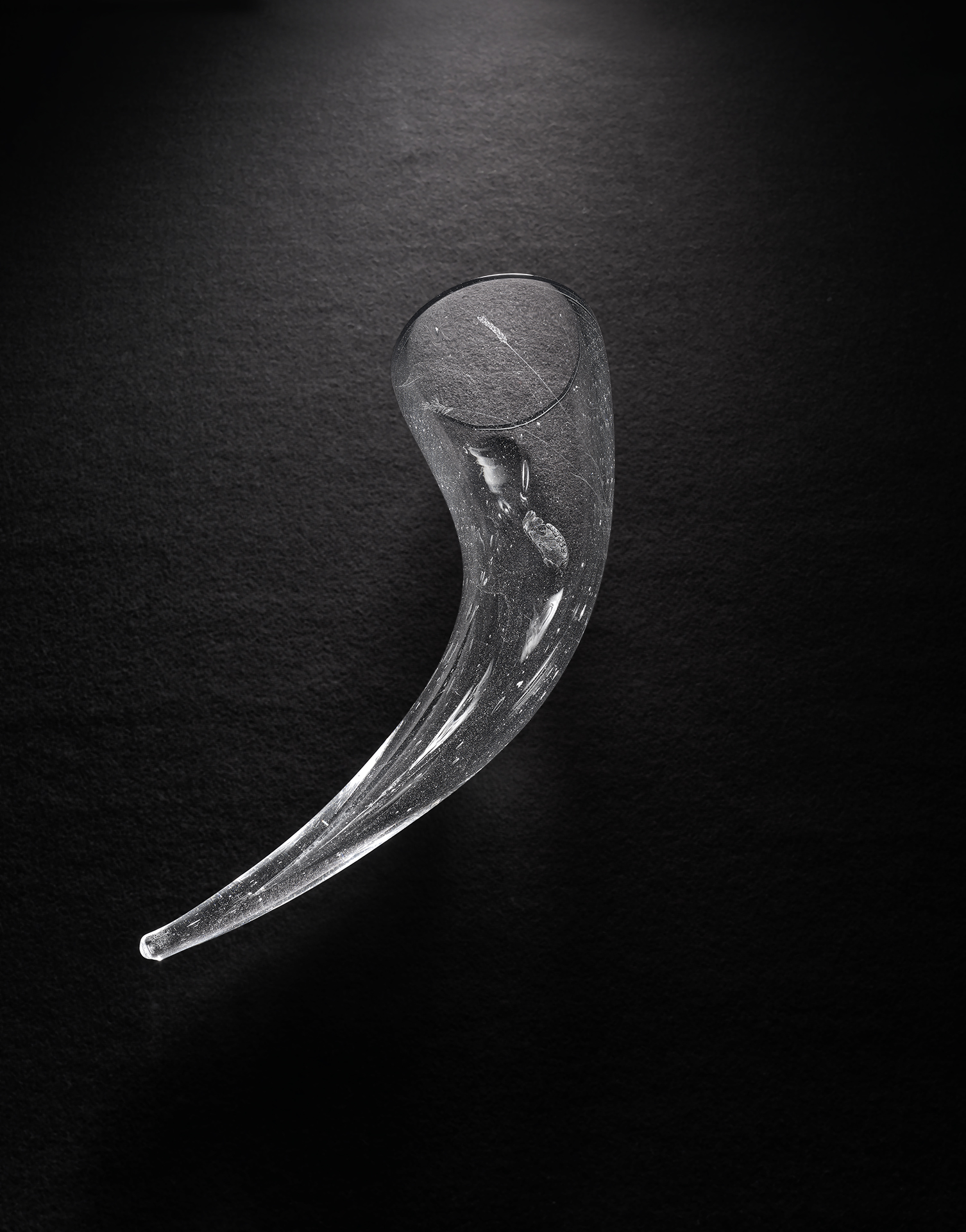Wild Things Inwards
2022Two blown glass Cornucopias made from vintage lead crystal tableware, broken, melted and reworked. Decorated with diamond point engravings of grasses and Moonwort (Botrychium lunaria).


Two Cornucopias explore the landscape of the North Pennines through glass aesthetics, recipes, raw materials and their connection to the land around the artist’s studio. Vintage tableware was melted and reworked into objects engraved with grasses and Moonwort, bringing together histories of lead glass ‘crystal’ once developed to imitate rock crystal, the toxic legacy of lead mining, rare upland habitats, early chemistry and glass embodiment of transmutation.
Moonwort (Botrychium lunaria) has a rich history connected to the manipulation of metals. It was referenced by alchemists in their pursuit for the transmutation of metals, in folklore and witchcraft for its powers over metals and it appears to tolerate contaminated ground. A mysterious plant with a mostly subterranean existence found on the Northern fells amongst flora surviving from the end of the last ice age.
The Cornucopia is associated with harvest, nourishment, fortune and infinite abundance; spiritual, agricultural and mineral. These glass horns of plenty emerge from fragile environments that exist above and below ground into translucent forms laden with mythologies from the Greek, Roman and Norse. In a nod to her Danish heritage and the 5th century Golden Horns of Gallehus, which were stolen and melted down for profit, Mou playfully recycles objects with a heritage of feasting and aspirational splendour.




Thanks to National Glass Centre, Kalki Mansel, Margaret E Bradshaw, Teesdale Special Flora Trust and Moor House – Upper Teesdale National Nature Reserve. Photography: John McKenzie.
In the collection of V&A, London.
Hinterlands, Anne Vibeke Mou, BALTIC Archive